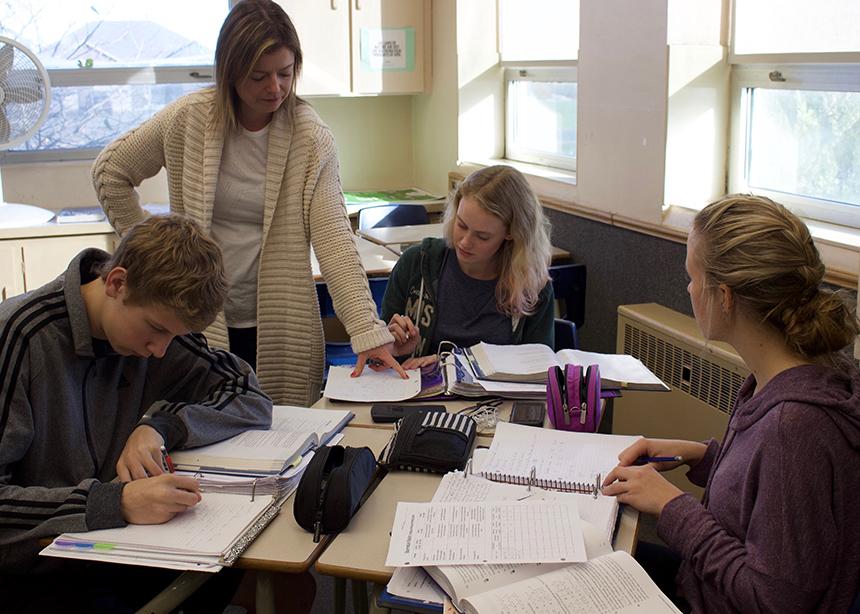Chani Wiens, UMEI’s academic math teacher since 2009, has introduced a new style of teaching to the school: the flipped classroom.
“I started to research classroom flipping when I became frustrated that, even in a small classroom, I wasn’t meeting the needs of each student as much as I wanted to,” she explains. “I felt that my higher-level students could be further challenged, and my struggling students would benefit from even more remediation and personalized attention.”
Classroom flipping “flips” the traditional method of spending class time on instruction and home time on homework questions. Now, students watch lecture videos created by Wiens at home and spend class time working on group challenges, interactive activities and the practice questions from the textbook.
“With the flipped classroom, you don’t get stuck on a concept at home because the homework is done in class,” says Grade 12 student Emma Bedal.
“During class, Mrs. Wiens is there to answer questions,” says Grade 12 student Robyn Jadischke. “We also have the opportunity to work through questions and explain concepts with our classmates. It creates a great learning environment.”
Wiens is always looking for new ways to reach her students, but flipping was a big risk for her to take on.
“I had to decide to commit to the concept, which meant recording hours’ worth of footage before the class even started,” she says. “It was important for me to record my own videos to maintain the relationship with my students. There are thousands of math videos on the internet, but the research I did suggested that students learn best when hearing and seeing their own teacher.”
With all of the videos online, students are able to self-pace their learning by re-watching videos as often as needed, viewing ahead if desired, or watching the video during class time if they choose.
“It allows for flexibility, which is great with my busy schedule,” says Bedal, who, like most UMEI students, is heavily involved in extracurricular activities and takes a wide range of challenging courses.
The real advantage of the flipped classroom is the ownership it gives students over their learning. It also allows them to develop critical thinking, problem-solving and decision-making skills, all while thinking creatively. Wiens knows the importance of preparing students for the future, and aiding them in the development of these skills is just one of the ways she does it.



Add new comment
Canadian Mennonite invites comments and encourages constructive discussion about our content. Actual full names (first and last) are required. Comments are moderated and may be edited. They will not appear online until approved and will be posted during business hours. Some comments may be reproduced in print.